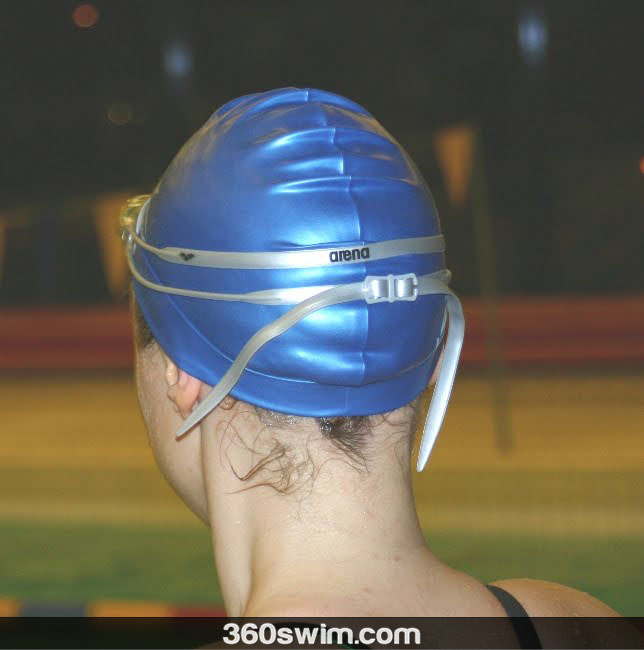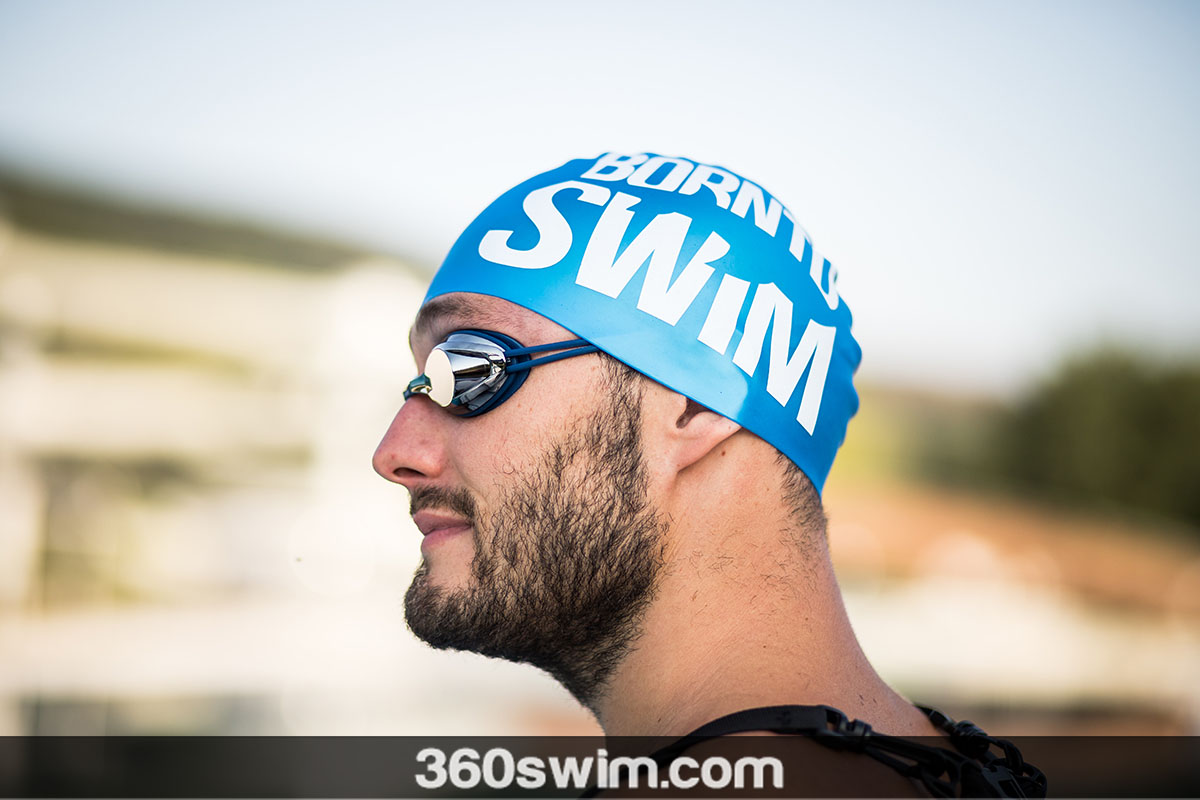SHOULD I WEAR A SWIM CAP? (HOW TO CHOOSE A SWIM CAP?)
To cap, or not to cap? That is the question for many swimmers. The answer isn't a simple yes or no. It depends entirely on your hair, your goals, and where you plan to swim.
This guide will walk you through the pros and cons, help you choose the right type of cap for your needs, and even show you how to put one on without ripping it.
Dive Into: Your Guide to Swim Caps
- Reasons to Wear a Cap (or Not)
- Caps for Open Water: Warmth and Safety
- Choosing the Right Material (and What to Avoid)
- How to Put On Your Swim Cap
- Pro Tip: Caps for Ultimate Race Speed
- Frequently Asked Questions
Reasons to Wear a Cap (or Not)
To answer the question if you should wear a swim cap, let's first think about why you are swimming and to what purpose would the cap be to you. So why do you swim?
If you are out there stroking from one side of the pool to the other for fun or a wonderful exercise and you have short hair, buying a swimming cap could be an overkill, therefore not necessarily something you'd need or enjoy. The only thing you need is a swimsuit and some decent goggles and you are set.

On the other hand, if you have long hair or are thinking of becoming a competitive swimmer, a swimrunner or a triathlete, it could be beneficial for you to wear a swimming cap once in a while and spend some time researching the types of caps that are out there.
If you have long hair, I'd suggest you do wear a swim cap as it is very hard to swim with the right technique, with the correct head position while trying to lift your head to keep the hair out of your face. Also, some folks say that using a swimming cap does prevent your hair from chlorine damage, but I wouldn't think too much about this.
For the group of you that will be swimming in competitions and you don't have long hair, I'd suggest you DO NOT wear a swim cap in your regular swim practices on most occasions.
The reason for this is that you want your time spent practicing to be harder and with more drag than while you are racing. Your head without a swimming cap has hair and ears flopping around, so the drag is much higher. If you work harder in practice, your racing will feel much faster. And most importantly, you negate some of the feeling of water flow over your head if you wear a swim cap all the time.
There are times in swim practices, however, that you should swim at competitions speed and practice certain things you will do in your swim meet, triathlon or a swimrun competition.
For example, practicing relay starts, turns or plain all-out sprints. During these activities, you might want to consider wearing a swimming cap as it gets you used to the feeling which you will have while competing.

Caps for Open Water: Warmth and Safety
If you are an open water swimmer or do swim often in very cold water, it is a very good idea to wear a swim cap as it helps with retaining your body heat. Most of your body heat usually escapes through your head, so by placing a swim cap on it will keep you warmer for longer.
On the other hand, you can also easily become overheated in a warmer pool, so be careful.
Swimming out there in the open water could be dangerous, especially if there are boats and other water sport athletes around your area. To decrease the chance of a collision with someone who might not see you, brightly colored swim caps should always be worn.
Choosing the Right Material (and What to Avoid)
If you think swim caps are uncool, then think again as swimming caps come in a huge variety of colors, designs, and materials. You can even design your own swimming cap for your team.
As mentioned above, there are swim caps made from many different materials. They range from lycra to latex and to silicone.
If I have to give you just one piece of advice about swimming caps, DO NOT buy Lycra caps. Pardon my french, but they are just dumb. They add more drag, they will not stay on your head, and they will definitely not help you reduce any drag.
For everyday swim practices, it is better to invest in latex or silicone caps. Latex caps are cheaper, but they do not last very long so it could be better to invest in a silicone type cap. However, be careful that the cap is not very tight on your head as your ears will start hurting after a few minutes in the pool.
From my personal experience, I'd suggest Latex caps for practice swims or a lower quality silicone caps which are less tight.
How to Put On Your Swim Cap
Nothing sucks more than ripping a new swim cap on your first day because your fingernails were too sharp :).
🎥 Watch a tutorial about how to put the cap on
The below video can help you with the proper technique on how to put your swim cap on.
Pro Tip: Caps for Ultimate Race Speed
Finally, if you are after a minimal drag in the water, the newish no-crease seamless swim caps, which are very smooth, might be the way to go for you.
Frequently Asked Questions
Should I wear a swim cap?
It depends. If you have long hair, swim competitively, or swim in open water, a cap is highly recommended. For casual swimming with short hair, it's optional.
What is the best type of swim cap to buy?
Silicone caps are the best all-around choice for durability and comfort. Latex caps are a cheaper but less durable alternative. Lycra caps should generally be avoided as they create drag and fall off easily.
Why shouldn't competitive swimmers wear a cap during practice?
Training without a cap creates more drag from your hair and ears. This makes your workouts harder, so when you put a cap on for a race, you will feel faster and more streamlined.
What are the benefits of a cap for open water swimming?
A swim cap provides two key benefits in open water: 1) It helps you retain body heat, as most heat is lost through your head. 2) A brightly colored cap makes you much more visible to boats and other people in the water.
Will a swim cap protect my hair from chlorine damage?
While it offers some protection by limiting water flow, it's not a perfect seal. For the average swimmer who isn't in the pool for many hours a week, significant chlorine damage to hair is unlikely anyway.
What is the trick to putting on a swim cap without ripping it?
Use the pads of your fingertips, not your fingernails. Stretch the cap wide with both hands, lower it onto your forehead, and pull it down and back over the rest of your head.
 LNURL1DP68GURN8GHJ7URP0YHRXD3SWDMKJMFWVDHK6TMVDE6HYMRS9A4HSCNCWFXSH3NN0H
LNURL1DP68GURN8GHJ7URP0YHRXD3SWDMKJMFWVDHK6TMVDE6HYMRS9A4HSCNCWFXSH3NN0H



































Comments (11)